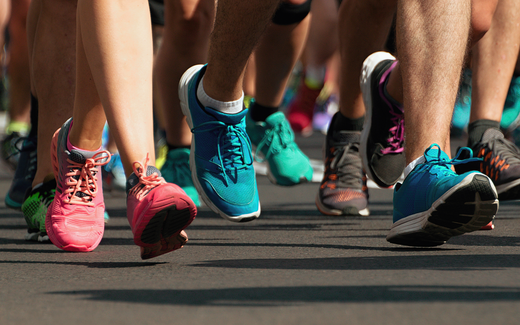And the important steps you can take to keep going the distance
Running is often seen as one of the best things you can do for your health, and in many ways it is. It can help improve your posture, reduce your risk of heart disease and diabetes, and strengthen your lower-body muscles.
But as with anything in life, too much of a good thing can be bad for you. Most people probably know that prolonged running can damage your joints, but did you know it might also contribute to your anemia? Well, now you do.
There’s even a term for it: runners’ anemia.
The good news is that not all runners will experience anemia symptoms, but if you’re someone who likes to hit the ground running (literally) you might want to read on to find out how your daily jaunt could be affecting your red blood cell levels.
What is Foot Strike Hemolysis, aka Runners’ Anemia
Let’s give a quick refresher: Hemoglobin, which can be found in our red blood cells, is needed to transport oxygen to our body’s muscles. And we need iron to create more hemoglobin so we can continue that process.
We also know that athletes need more iron than everyday people because they use up their hemoglobin stores much quicker. Some studies suggest that 17 to 50 percent of all endurance athletes are susceptible to anemia, which can cause the following symptoms:
- Fatigue
- Physical weakness
- Lightheadedness
- Dizziness
- Pallor (Pale or yellowish skin)
- Shortness of breath
- Rapid heart rate
- Headaches
- Chest pains
- Cold hands and feet
But there’s also another reason why athletes could experience anemia symptoms, and that’s the very act of running. The repeated act of our foot striking the ground could cause the red blood cells in our feet to be destroyed.
This is known as foot strike hemolysis (hemolysis is the term used to define the destruction of red blood cells).
If our red blood cells are destroyed, that means there’s less hemoglobin carrying oxygen to our muscles—unless we create more.
Now we have to say that a quick mile-long run isn’t going to cause this condition, but you might be at risk if you run multiple times a day or are preparing for a long-distance race like a marathon. In other words, your foot has to be hitting the pavement for long periods before you worry about whether or not you’re at risk for runners’ anemia.
What Can You Do to Prevent Runners’ Anemia?
Good question and there are quite a few things you can do.
Wear Proper Footwear
The same way a helmet protects a football player’s head during a tackle, proper running shoes can protect your feet from hitting the pavement time after time. It’s equally as important to make sure your running shoes are in good condition. If they’re compressed or worn out, which typically happens after wearing them for 250-300 miles, it’s time to get new ones.
Change Your Running Surface
We all love an outdoor stroll, but it should come as no surprise that concrete is the hardest running surface you could put your feet on. If you’re worried about runners’ anemia, consider training on a cushioned treadmill or a softer surface like dirt.
Keep Your Iron Levels High
It should be said that runners’ anemia will only cause anemia symptoms if your hemoglobin levels are already low. Of course, if you’re eating enough iron then your body has the ability to create more hemoglobin, and thus replace the red blood cells that were destroyed during your run.
Make sure to add the following high-iron foods to your grocery list:
- Red meat
- Eggs
- Tofu/tempeh
- Oats
- Leafy green vegetables
- Lentils
- Palm Hearts
- Cabbage
- Brussels Sprouts
- Pumpkin and flaxseeds
- Potatoes
- Mushrooms
- Dark Chocolate
On Your Mark, Get AnemoCheck, Start!
You check your stride, your distance, and your pace, so why not check your hemoglobin levels? Making sure they’re in range can give you the boost you need to eke out that win at the finish line.
Click here to download the app via the iOS or Android app stores.





Dejar un comentario
Este sitio está protegido por hCaptcha y se aplican la Política de privacidad de hCaptcha y los Términos del servicio.